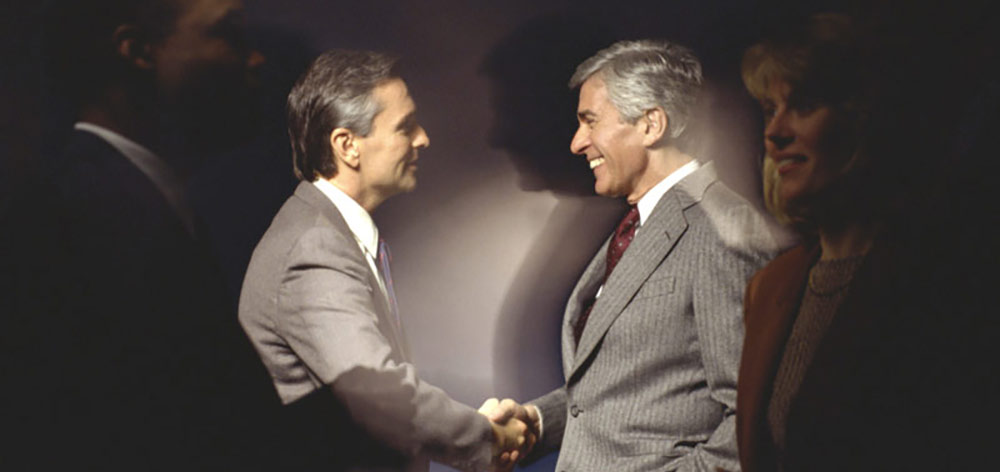Over lunch, one of my clients asked me one of the most profound questions I have ever been asked. “In your training,” he asked, “do you focus on instilling new skills into people, or do you focus on removing the internal hindrances to the use of those skills?”
Wow. From my perspective as a professional trainer and educator, I had never met anyone else who even thought in those terms. The issue was, of course, that which is at the heart of every educator/trainer of adults. If our job is ultimately to change behavior, his question was, more or less, “What is the best way to change behavior in the adults with whom you work?”
He was the head of an international non-profit association, and the focus of the question were those social workers in his employment whom I was training in better communication skills. The question is much broader than just that group of folks, and can be applied to any adult occupation.
Most of my work for the last two decades has been with sales people, sales managers, and executives. In that context, the question could be rephrased to this: “What is the best way to change the behavior of a sales person, and unleash that person’s potential?”
Let’s make this personal. What holds you back? What is it that prevents you from achieving your potential? Is it a lack of skills, is it internal hindrances that keep you performing at less than your optimum, or is it some combination of both?
Before I share my opinion, let me share a couple of experiences that have colored that opinion.
My wife and I were in Soweto, the huge African township in the Johannesburg, South Africa area. On the day we were visiting there, the elementary children were on strike. That’s right. They were refusing to go to school. Even more curious was the reason they were on strike. They objected to being graded as individuals. Their rationale was “Either the whole class passes or the whole class fails. Who are you, a teacher, to single out one of us as better than another?”
That tribal paradigm colored all of their thinking and ruled their behavior. It doesn’t take much thought to see the consequences of that paradigm. If no one is allowed (or encouraged) to rise up, then no one will try. The entire group will be brought down to the lowest common denominator. In that case, their futures will hold little promise – their potential for achievement and personal growth imprisoned by a belief.
While that certainly is a dramatic example of beliefs and paradigms limiting our efforts to unleash our potential, it is hardly the only one.
How much different is that, I wonder from time to time, from the description which follows of predictable behavior in a sales training workshop? When it comes time to create questions in a small group, or prepare for a role-playing exercise, predictably five percent of the participants suddenly have to make a phone call or use the rest room, opting out of the exercise.
Was their bladder really bursting, or was it that their ego was so fragile that they didn’t want to risk having to actually perform in some small way in the presence of their colleagues?
Could it be that their fragile ego serves the same function as the elementary students’ tribal paradigm? Could they both be internal beliefs and attitudes that hold back their performance, preventing them from changing their behavior and reaching their potential?
Absolutely! As a seasoned educator with the experience of having worked with tens of thousands of sales people, I have concluded that the biggest obstacles to our improved performance comes not in the new skills we develop, but rather in the internal obstacles that clutter our psyches.
In other words, I can, for example, teach someone the value of asking better questions. I can show them how to create better questions, help them gain an understanding of what constitutes a better question, assist them in creating and editing questions, and even help them practice the act of asking better questions.
I can’t however, overcome their internal obstacles. If they have, for example, a vision of themselves as the glad-handing, always ready with a new joke, life of the party personality, then they won’t see themselves as having the interest in the customer to drive the behavior that they have just learned. Their internal beliefs will trump their learned behaviors.
That’s not to negate the role of training. Certainly there are best practices in sales, in business, and every other profession, and a well-conceived training session is still one of the best ways to learn the best practices. And, a training session from a gifted educator always whittles away at both ends of the spectrum – changing behavior by instilling new ideas and at the same time attacking internal obstacles.
The real point of this monologue is personal. As an individual whose decisions will influence the course of your life, the question is, “To what degree do you confront the internal obstacles that hold back your potential?” From my experience, the world is full of people who never consider that the reason for their lack of achievement, prosperity, fulfillment, etc. is inside themselves. They focus on the tactics, complain about the customers and their bosses, fill their days with low-value tasks, and spend most of their careers in a place of mediocrity of their own making.
If you are going to unleash your potential, you must focus on removing the internal hindrances to your performance with the same energy and intentionality that you apply to gaining the skills and competencies of the best in your profession.
Here’s another way to look at it. This diagram is from my book, Take Your Sales Performance up a Notch.

It’s a description of my view of how behavior comes from the inside out. We are sort of like onions, with multiple layers to us. On the surface of the muti-layered entity that we are reside those tactics, skills and abilities which we use to do the things that we do day to day. Underneath that, and to a great degree dictating the tactics on the surface, are the strategy, goals, habits and processes that we create in order to help us select effective tactics.
Undergirding that, and influencing everything above it, is our set of attitudes. We’ve all heard about the importance of a positive attitude. This diagram explains why that is. Our attitudes influence and impact everything above it. However, there are, more deeply within us, other things that shape our attitudes. Our values, beliefs and world view all combine into those paradigms that ultimately control our behavior.
So, if you want to change your behavior (the most superficial level), you must combine work in the deeper levels with efforts to attain new skills at the upper levels.
Work at both, and you will eventually develop into a highly skilled, fulfilled human being, operating at close to his/her potential.
The next logical question is, “OK, Dave, how do I do that?” And that will be the subject of the next post.



Recent Comments